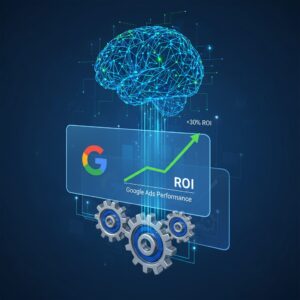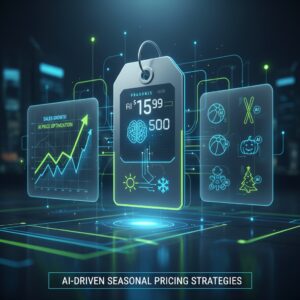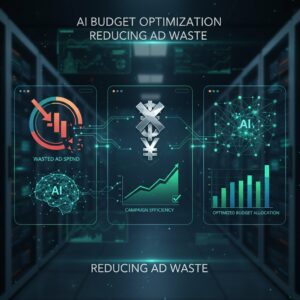
I’ve spent 20 years building and scaling small businesses. The businesses that win are those that spot opportunities first. Your competitors are looking at last month’s data. You need to see what sells tomorrow.
AI changes everything about product research. You can now predict demand before it spikes. You can see trend patterns months ahead. You can identify winning products while your competitors are still guessing.
Let me show you how.
Why Traditional Product Research Fails
Most business owners use outdated methods to pick products. They browse bestseller lists on Amazon. They check what worked last quarter. They ask suppliers what’s moving.
This approach puts you behind the curve.
By the time a product appears on a bestseller list, hundreds of sellers already jumped in. The profit margins are thin. The competition is fierce. You’re fighting for scraps.
I learned this lesson the hard way in 2018. I launched a home fitness product based on trending searches. It looked perfect on paper. The numbers showed strong demand. But I was three months too late. Twenty other sellers had the same idea. My inventory sat in a warehouse for eight months.
Traditional research shows you what already happened. You need tools that show you what will happen.
AI tools scan millions of data points every hour. They track social media conversations. They analyze search patterns. They spot micro trends before they explode. They give you a three to six month advantage.
That advantage is the difference between profit and loss.
How AI Predicts Product Demand
AI doesn’t guess. It processes data at a scale humans cannot match.
Here’s what AI tools actually do:
They monitor social media platforms for emerging conversations. When people start talking about a problem or need, AI flags it. Before search volume increases. Before suppliers catch on.
They analyze search query changes across multiple platforms. Google, Amazon, TikTok, Pinterest. AI spots when searches for specific product types start climbing. It measures the acceleration rate. It predicts when demand will peak.
They track competitor inventory levels and pricing changes. AI notices when successful sellers start stocking specific items. It identifies patterns in their product selection. It reverse engineers their research process.
They scan patent filings and manufacturer announcements. New products coming to market create opportunities. AI finds these products before they hit retail channels.
I use three specific AI tools in my current businesses.
The first tool monitors Reddit, Twitter, and Facebook groups. It identifies problems people complain about repeatedly. When I see the same problem mentioned 500 times in a week, I know there’s demand for a solution.
The second tool tracks Amazon search terms and converts data into trend predictions. It shows me which categories are growing fastest. It highlights products with rising search volume but low competition.
The third tool analyzes TikTok and Instagram content. It measures engagement rates on product videos. It identifies which items are going viral before they hit mainstream awareness.
These tools cost between $50 and $300 per month. The return on investment is substantial. One good product find pays for years of subscriptions.
Implementing AI Product Research in Your Business
You need a system. Random AI tool usage wastes time and money.
Start with clear parameters. Define your business model. Are you dropshipping? Private labeling? Wholesale? Different models need different product criteria.
Set your filters. Product price range. Category preferences. Minimum profit margins. Competition levels you’re willing to face. Feed these parameters into your AI tools.
Create a daily monitoring routine. Spend 30 minutes each morning reviewing AI alerts. Look for products that meet your criteria. Don’t chase every opportunity. Focus on items that fit your business model.
Here’s my actual daily process:
I open my social listening tool at 8 AM. I review the top 20 trending problems or needs. I eliminate anything outside my target categories. I’m left with three to five potential opportunities.
I run those opportunities through my Amazon analysis tool. I check search volume trends. I look at competition levels. I examine price points and estimated margins. This eliminates two to three options.
I take the remaining opportunities to my visual trend tool. I see if there’s content momentum building. If I find videos with strong engagement, I dig deeper.
I spend 15 minutes researching suppliers. Can I source this product? What are the minimum order quantities? What’s my landed cost? This final step usually leaves me with one solid opportunity per week.
That’s 52 potential winning products per year. You only need three or four winners to build a successful business.
Document everything. Keep a spreadsheet tracking which AI signals led to successful products. Refine your process based on results. AI gets smarter, but so should your interpretation of its data.
Test small before you scale. AI predictions are accurate but not perfect. Order sample quantities. Test marketing on a limited budget. Validate demand before you invest heavily.
I never order more than 100 units on a first run. Even when AI shows strong signals. I test the product for 30 days. I measure conversion rates and customer feedback. If the numbers work, I scale up.
The Competitive Advantage You Can’t Ignore
Your competitors will adopt AI tools. The question is when.
Early adopters gain the biggest advantages. You can establish market position before others enter. You can build customer bases and reviews. You can optimize your listings and advertising.
I’ve watched this pattern repeat across every technology shift. Email marketing. Social media advertising. Influencer partnerships. The businesses that moved first captured disproportionate returns.
AI product research is the current shift. The window for early advantage is open now. It won’t stay open forever.
The tools are accessible. You don’t need technical skills. You don’t need large budgets. You need commitment to learning and implementing.
The businesses I’m running today use AI for every product decision. We haven’t had a major product failure in 18 months. Our hit rate on new products is above 70%. Before AI tools, we were at 30%.
That improvement is real money. Fewer failed inventory investments. Higher average profits per product. Faster growth rates.
You can achieve similar results. Start with one AI tool. Learn how it works. Integrate it into your research process. Add more tools as you see results.
The market rewards speed and accuracy. AI gives you both.
Your competitors are reading this same advice. Some will take action. Most will wait. Which group do you want to join?
Please check our Business Tips https://thoughts.business/category/business-tips/
Please check our partner site – Why Invest? https://whyinvest.info/





